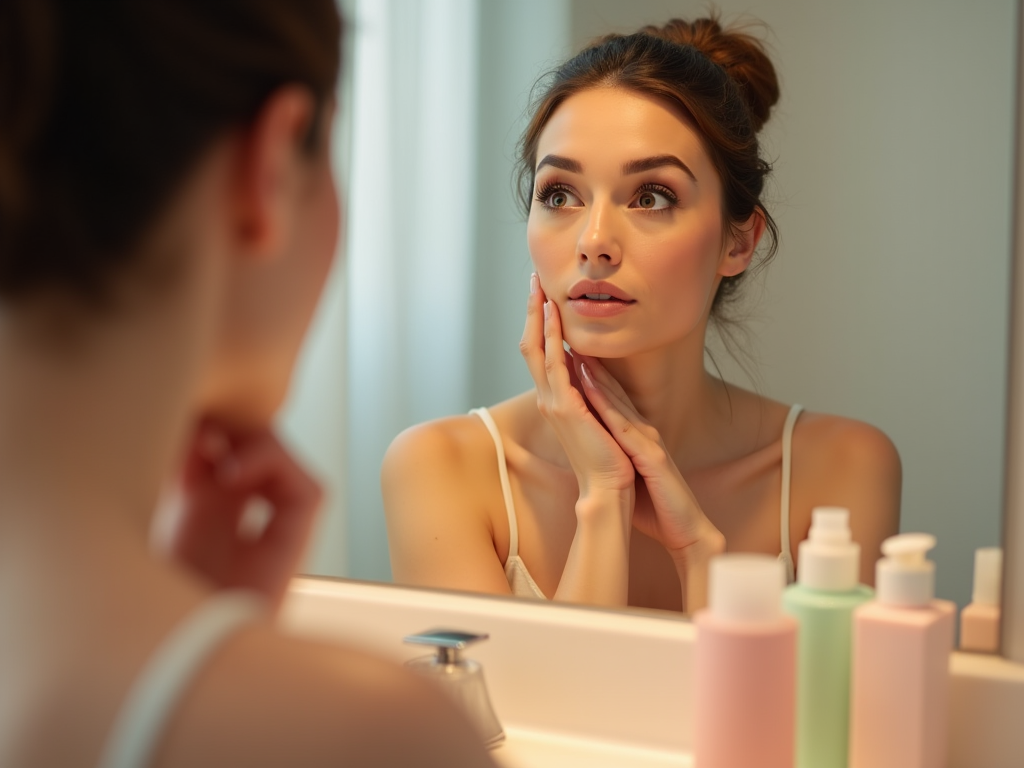Dark eyelids can significantly impact one’s confidence and overall appearance, often giving off an impression of fatigue or illness. The delicate skin surrounding the eyes is very thin, making it susceptible to changes in pigmentation and texture. Many people strive for a radiant look, employing various cosmetic products, but those persistent dark circles can be a source of frustration. By understanding the underlying causes of dark eyelids, individuals can better navigate through numerous solutions that are effective and accessible. This article delves into the common causes behind dark eyelids and presents practical methods to address this concern.
There is a plethora of treatment options available, ranging from natural remedies to advanced dermatological procedures. Each solution varies based on individual needs, skin types, and the root causes of the discoloration. Furthermore, being informed about potential triggers can help in avoiding them for maintaining healthier skin around the eyes. In the quest for beauty, knowledge is just as crucial as the products one chooses to apply. The following sections will explore the various contributors to dark eyelids and the effective strategies to combat them.
Understanding Dark Eyelids

Dark eyelids can be a common concern for many individuals, often affecting one’s appearance and self-esteem. The skin around the eyes is not only thin but also highly sensitive, making it prone to conditions that contribute to hyperpigmentation. It’s important to comprehend the physiological aspects of dark eyelids as it helps in finding the right solutions tailored to individual situations. Various factors contribute to this condition, including lifestyle choices, environmental elements, and inherited traits. Recognizing these influences will enable better management of dark eyelids.
Dark eyelids are primarily caused by the melanin production in the skin, leading to hyperpigmentation. The thin skin around the eyes can also amplify this effect, making it crucial to understand the underlying factors. Additionally, blood vessels underneath the skin can become more visible due to various reasons, further intensifying the appearance of dark circles. Lifestyle choices such as diet and sleep patterns play a significant role in skin health, particularly in delicate areas like the eyelids. As such, hydration and nutrients are vital for maintaining skin elasticity and vibrancy.
Common Causes of Dark Eyelids

There are several reasons why dark eyelids may develop. Understanding these causes can help in finding effective solutions. Many people often overlook some of the more common contributors to dark eyelids, instead focusing solely on cosmetic fixes. Let’s take a look at some of the key factors that can lead to this condition.
Genetics
Genetic predisposition plays a significant role in skin pigmentation, including the area around the eyes. If parents have dark circles, children may also inherit this characteristic. The propensity for dark eyelids can be linked to ethnic background as well, leading to varied pigmentation patterns across different populations.
Allergies
Allergic reactions, often leading to itchiness and swelling, can cause the skin around the eyes to darken over time. Common allergens like dust, pollen, or even certain skincare products could be to blame. This inflammation can lead to increased blood flow and discoloration around the eyes, reinforcing the need for proper allergy management.
Lack of Sleep
Insufficient sleep can exacerbate dark eyelids, leading to poor blood circulation and a dull complexion. When the body lacks rest, the skin appears paler, which exploits underlying blood vessels, creating a dark appearance around the eyes. Adopting a proper sleep routine can mitigate these effects significantly.
| Cause | Impact on Dark Circles |
|---|---|
| Genetics | Predisposed pigmentation |
| Allergies | Inflammation and swelling leading to discoloration |
| Lack of Sleep | Poor circulation causing darkening |
| Aging | Loss of fat and elasticity |
| Sun Exposure | Increased melanin production |
Aging
As we age, the skin loses elasticity, and the fat pads beneath the eyes can diminish, leading to a more sunken appearance and darkened skin. The area around the eyes becomes increasingly fragile, showing signs of wear. This natural aging process can be countered with preventative measures, including skincare routines that emphasize hormonal balance.
Sun Exposure
Prolonged exposure to the sun leads to increased melanin production, resulting in darker skin around the eyelids. UV rays can accelerate skin damage, underlining the importance of protective measures such as sunscreen. Choosing the right eye cream with SPF can help shield sensitive areas from harmful rays.
How to Get Rid of Dark Eyelids
There are various methods to reduce or eliminate dark eyelids, ranging from home remedies to professional treatments. Each option may cater to different causes and severity levels, thus understanding the suitable approach is essential. Below are some effective home remedies and professional treatments to combat dark circles effectively.
Home Remedies
Several natural solutions can help combat dark eyelids:
- Cucumber Slices: Known for their cooling effect, cucumber slices can soothe the skin and reduce puffiness.
- Cold Tea Bags: Placing chilled green or black tea bags on the eyelids can help lessen dark circles due to their caffeine and antioxidant properties.
- Almond Oil: Gently massaging almond oil around the eyes may improve skin tone and reduce pigmentation.
Professional Treatments
For more persistent cases, consulting a dermatologist may be beneficial:
- Chemical Peels: These can help exfoliate the skin, promoting new skin growth and potentially lightening dark areas.
- Laser Therapy: Targeted laser treatments can effectively reduce pigmentation by destroying melanin cells.
- Fillers: In some cases, dermal fillers can address volume loss in the under-eye area, improving its overall appearance.
Conclusion
Dark eyelids can be caused by various factors, including genetics, allergies, lifestyle choices, and aging. Understanding the causes can lead to effective treatment options, whether through home remedies or professional assistance. Taking proactive steps not only enhances appearance but can also improve overall skin health. Consider incorporating lifestyle changes along with topical solutions to address the issue holistically. Don’t let dark eyelids hold you back; explore the multitude of options available to regain your confidence.
Frequently Asked Questions
- What are the most common causes of dark eyelids?
- Common causes include genetics, allergies, lack of sleep, aging, and sun exposure.
- Are there any effective home remedies for dark eyelids?
- Yes, home remedies like cucumber slices, cold tea bags, and almond oil may help reduce darkness.
- When should I consider professional treatment for dark eyelids?
- If home remedies don’t provide relief, or if pigmentation is severe, consider consulting a dermatologist for professional options.
- Can lifestyle changes help in reducing dark eyelids?
- Absolutely! Improved sleep habits, hydration, and sun protection can all contribute to lighter eyelids.
- Are dark eyelids a sign of a medical condition?
- In some cases, dark eyelids may indicate underlying health issues, so it’s advisable to consult a healthcare professional for persistent concerns.
